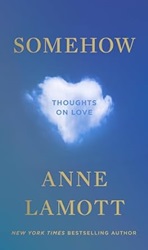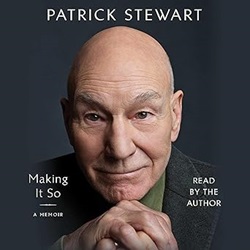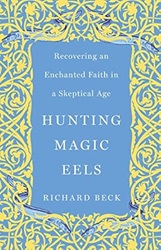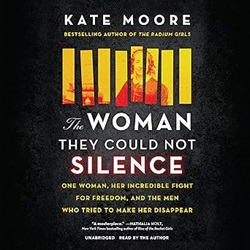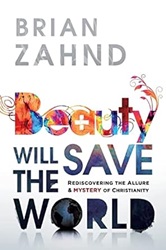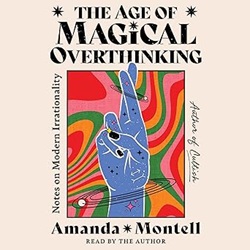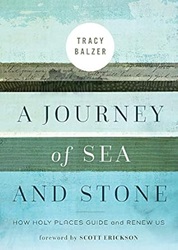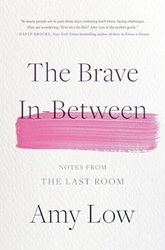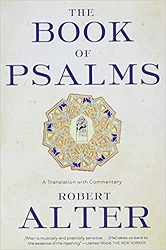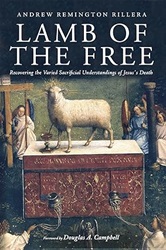 Lamb of the Free
Lamb of the Free
Recovering the Varied Sacrificial Understandings of Jesus’s Death
by Andrew Remington Rillera
Cascade Books, 2024. 325 pages.
Review written May 31, 2024, from my own copy, purchased via Amazon.com.
Starred Review
I purchased – and actually read – this book because of strong recommendations from progressive Christians I follow on Twitter. I was not sorry. This book is amazing, giving an in-depth look at the sacrificial system set up in the Torah and how those sacrifices are used to talk about Jesus in the New Testament. Along the way, we learn that there’s nothing in the sacrificial system that’s penal – about punishment – and nothing that’s substitutionary – about taking something in place of someone else so they don’t have to. No, we see that Jesus’s death is shown to be participatory – Jesus identified with humanity in our curse to the point of death, and now we participate with Jesus in his death and resurrection.
That’s all in there, and it’s amazing and good. But let me warn my readers: This is an academic book written for professional theologians. I very much want to see a layperson’s summary of this book written. In fact, I’d love to take that project on myself — if I were sure I understood this book well enough.
There are long footnotes on almost every page and Scripture references noted throughout the text. The arguments of other scholars are noted and referred to. (And I had purchased one of the books he refutes. That one is also academic, so now I can put it away without trying to slog through it. Whew!) But this is a good thing! Before a layperson’s summary can be written, this book is needed to establish the firm biblical foundation of these ideas.
So although it was hard to wade through, it made my heart happy as I read. Something Andrew Rillera made clear is that the Bible does not teach that God is mad at us and requires a horrible death before God could ever forgive us.
Now, I’m a person who since childhood has read through the Bible over and over again. And, well, I’ve memorized the entire New Testament, Psalms, Proverbs, Isaiah, and half of Jeremiah (a chapter at a time, anyway). But when I read through Leviticus, let’s just say that often my mind wanders. I’m very aware that there are many different kinds of sacrifices, offered in many different ways.
So I just loved that this author explained the different types of sacrifices, how they relate to Jesus, and how New Testament writers apply them to Jesus. Although I’d still like a chart of the types of sacrifices, next time I read Leviticus, I’m going to have a better understanding of what I’m reading and how the various sacrifices are distinguished between one another.
Let me just give some things that struck me:
The sacrifices were not about death.
Although this one is hard for me to explain, the author’s pages of explanation show that sacrifice is about accessing the offering’s life, found in the blood.
The sacrifices were not about suffering.
The offering was to be killed quickly and humanely. And this is interesting:
This is significant because we can now see that when it comes to sacrificial understandings of Jesus’s death in the NT, these never occur in the context of Jesus’s sufferings and passion. Put another way: when Jesus’s sufferings and/or death qua death are the topic, then sacrificial metaphors are avoided.
Sacrifices were often about ritual purification. And often about remembrance. Or establishing a covenant. (I’d like to see a great big chart, honestly. But it’s all detailed here.)
Something I did grasp is that there were two types of sacrifices: Atoning and non-atoning sacrifices. The person offering the sacrifice never eats of an atoning sacrifice.
So when Jesus established the Lord’s Supper, he was relating his death to non-atoning sacrifices — the well-being sacrifices and the covenant-establishment sacrifices of the Passover. They are about remembering and about participating in.
But he also makes the point that some offenses were never intended to be dealt with by the sacrificial system.
Forgiveness has always been wider and deeper than the sacrificial system. God’s forgiveness was always available via extra-sacrificial means (e.g., Pss 32; 51; 103; Isa 38:17), so the prophets are confident that God will have mercy and forgive Israel and restore them just because that is the kind of God that God is and this is the kind of thing God can do (e.g., Isa 43:25; 44:22; 55:7; Jer 50:20; Mic 7:18-19; Hos 14:2-7; cf. Zeph 3:15).
I also love the part where the author explains the way the Romans used altars commemorating a conqueror’s mercy – “votive gifts” – and how that gives us insight into what Paul is saying in Romans 5 through 8.
Paul is essentially saying:
Look at Jesus! God is not your enemy! You are the ones at enmity with God. God is justifying you even though you are ungodly. God has put forth Jesus as a conciliatory votive gift of peace and reconciliation to demonstrate this. Be reconciled to God! God loves you! If God did not spare God’s own Son, then nothing can separate you from the love of God revealed and manifested in Jesus Christ. Jesus eternally stands in the presence of God (like votive gifts stand in temples) interceding for us all.
That’s all a really poor summary of what’s going on in this book. If you can handle academic writing at all, and to anyone who’s ever been to seminary, I highly, highly recommend this book. Of course, he goes into great detail about every type of sacrifice in the Torah and every mention of Jesus associated with sacrifice in the New Testament. Hebrews and 1 John do associate Jesus with atoning sacrifices, and do not mention the Lord’s Supper, and he looks at the implications of that, while also paying close attention to the more frequent mentions relating to non-atoning sacrifices.
Here’s a paragraph from the Introduction that helps us see where the book is going:
Jesus’s death is a participatory phenomenon; it is something all are called to share in experientially. The logic is not: Jesus died so we don’t have to. Rather it is: Jesus died so that we, together, can follow in his steps and die with him and like him, having full fellowship with his sufferings so that we might share in the likeness of his resurrection (e.g., Phil 3:10-11; Gal 2:20; 6:14; Rom 6:3-8; 1 Pet 2:21; Mark 8:34-35 with 10:38-39; 1 John 2:6; 3:16-18; etc.).
And here are some paragraphs from the end, summing up the journey he’s led us on:
Therefore, understanding the concepts of sacrifice and kipper properly is part of understanding the story of salvation the NT is telling. For instance, if we think sacrifice is all about punishment and retributive justice, then we will fundamentally misconstrue the sacrificial images applied to Jesus. This means we will misconstrue what “salvation” and “justice” mean because these terms will be informed and defined by alternative stories and frameworks. But getting the concepts and story right are crucial, not only for an individual Christian’s formation, but also our collective formation as part of a common and shared tapestry faithfully witnessing to the salvation of God in Jesus Christ as his body, the church….
So when we get the sacrificial concepts right by understanding the larger story of which they are a part, then we can find our place within that story, and as Paul says, become sharers and partakers of the body and blood of Jesus (1 Cor 10:16-17). And by so doing we become a living well-being sacrifice ourselves (Rom 12:1), narrating the death of Jesus in our bodies for the life and reconciliation of the world (2 Cor 4:10-12; 5:14-21).
So, let me challenge you. If you’re up for a deep dive into the details of the sacrificial system and what Jesus’s death means — you will be richly rewarded. I admit it will take some work and thought, but will yield a beautiful result.
Buy from Amazon.com
Find this review on Sonderbooks at: www.sonderbooks.com/Nonfiction/lamb_of_the_free.html
Disclosure: I am an Amazon Affiliate, and will earn a small percentage if you order a book on Amazon after clicking through from my site.
Disclaimer: I am a professional librarian, but the views expressed are solely my own, and in no way represent the official views of my employer or of any committee or group of which I am part.
What did you think of this book?
